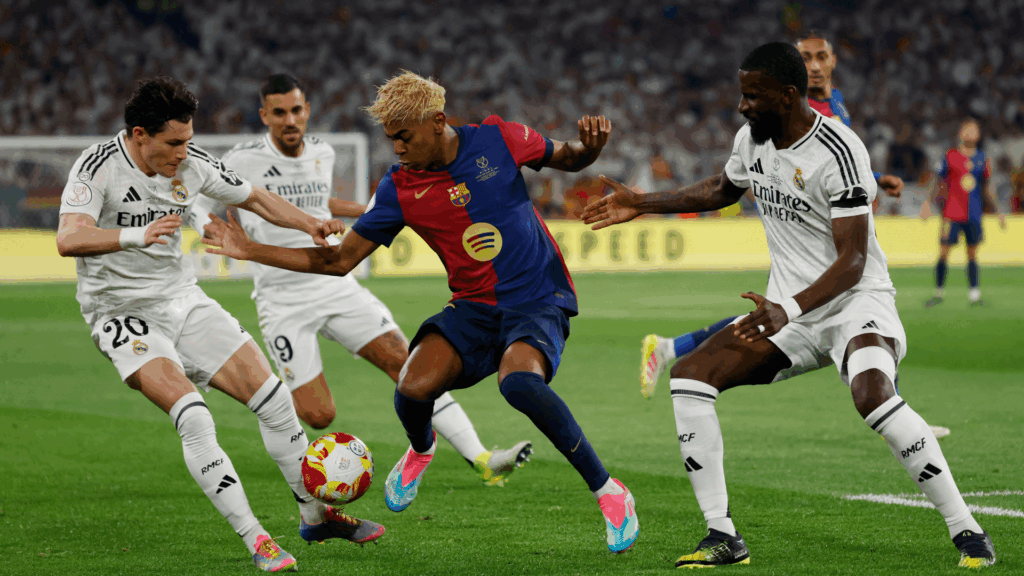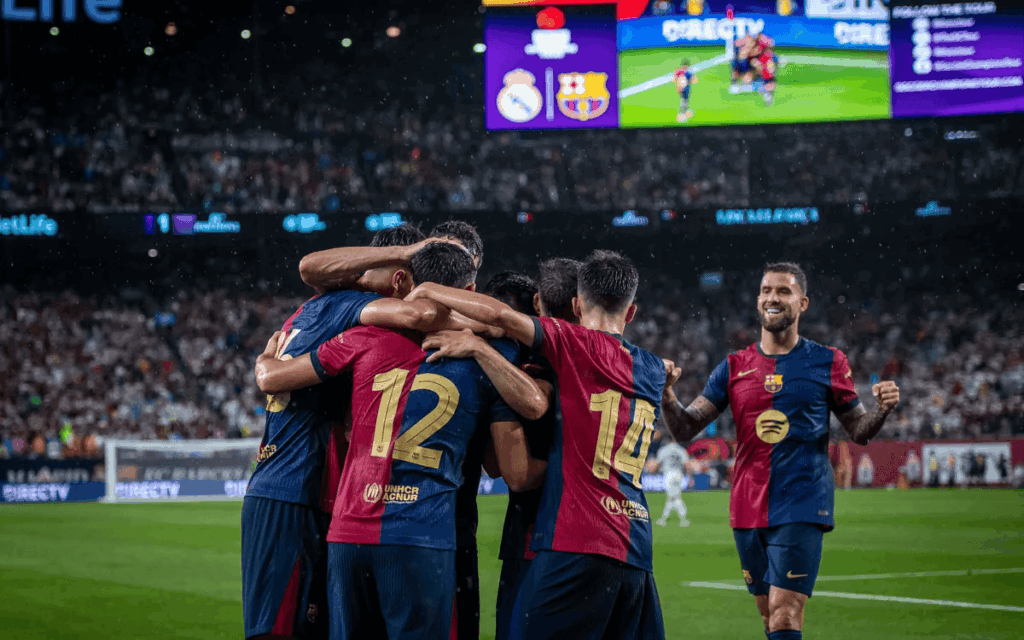As Real Madrid and Barcelona prepare to clash on October 26, 2025, the focus isn’t only on the football. La Liga’s technology, and its ongoing gaps, are under the microscope again.
Barcelona head into this El Clásico still feeling the sting of a 4–1 loss to Sevilla earlier this month, their second major defeat in weeks after falling to PSG in the Champions League. The backlash online has been relentless, and every decision in Madrid will now be magnified—especially given La Liga’s uneasy relationship with VAR and its refusal to adopt goal-line technology.
For all of La Liga’s progress with VAR and semi-automated offside tracking, the league remains an outlier in one crucial area: it still hasn’t implemented goal-line technology. That absence has already shaped El Clásico history. In last season’s April clash, Lamine Yamal’s near-post flick seemed to cross the line before Andriy Lunin clawed it out. With no sensors to confirm it, officials turned to VAR’s limited camera angles and ruled it out. Madrid went on to win 3–2, sealing the title and reigniting debate about whether La Liga’s tech setup can keep up with its biggest moments.
It’s a storyline fans know too well. The league’s president, Javier Tebas, has defended the decision, insisting that “if goal-line technology were perfect, we would have already put it in. With VAR, 99% of the plays can be solved.” But that missing 1% has already left scars—and countless viral clips that keep resurfacing whenever controversy strikes.
Now, with the stakes rising again, this El Clásico feels more than a rivalry. It’s another test: for Barcelona’s resolve, for Madrid’s dominance, and for La Liga’s claim that its technology can handle the world’s most-watched game.

The current tech behind La Liga
La Liga’s officiating system relies on the Xeebra VAR setup, which gives referees synchronised multi-angle footage they can zoom and rotate in real time. It also uses AI-powered offside detection that maps 3D player positions for faster and more precise calls.
Even so, the absence of goal-line sensors keeps raising doubts about accuracy and fairness—especially after moments like Yamal’s disallowed flick in the last El Clásico. Other leagues resolved those grey areas years ago: the Premier League’s Hawk-Eye system has been active since 2013 and has settled countless tight calls, including France’s confirmed goal against Honduras in the 2014 World Cup. Similar systems run in Serie A, the Bundesliga, and the Eredivisie.
Still, it’s not flawless or cheap. France’s league suspended its provider in 2018 after repeated errors, and Hawk-Eye itself apologised in 2020 when a camera occlusion cost Sheffield United a goal. So while GLT removes much of the guesswork, it also comes with costs and operational risks—partly why La Liga’s leadership insists that VAR and 3D offside tracking already handle most contentious decisions.

Where to watch Real Madrid vs. Barcelona (El Clásico 2025)
The first El Clásico of the season kicks off on Sunday, October 26, 2025, at 4:15 p.m. CET at the Santiago Bernabéu.
You can stream it live on:
- ESPN+ in the U.S.
- SuperSport La Liga across Africa.
- Movistar+ and DAZN in Spain.
- LaLiga TV via Premier Sports in UK & Ireland.
- Viacom18 Sports or JioCinema in India.
- Optus Sport in Australia.
- beIN Sports in the Middle East.
- ESPN in the Latin American regions.
Read Also: Best ways to stream 2025 FIFA World Cup for free in Africa
Fixtures to watch after October
El Clásico is only one chapter in the season’s story this year. Here are a few fixtures that will keep the tension alive:
- November 30, 2025 – Sevilla vs Real Betis (Seville Derby)
- March 22, 2026 – Real Madrid vs Atlético Madrid (Madrid Derby)
- May 9–10, 2026 – Barcelona vs Real Madrid (return El Clásico at Camp Nou)
This matchup could change the direction of the season. Madrid’s derby with Atlético comes next in March, then the return leg at Camp Nou in May. Between now and then, expect every decision to spark debate — because in football today, technology stirs as much emotion as the goals themselves.
Get passive updates on African tech & startups
View and choose the stories to interact with on our WhatsApp Channel
Explore




